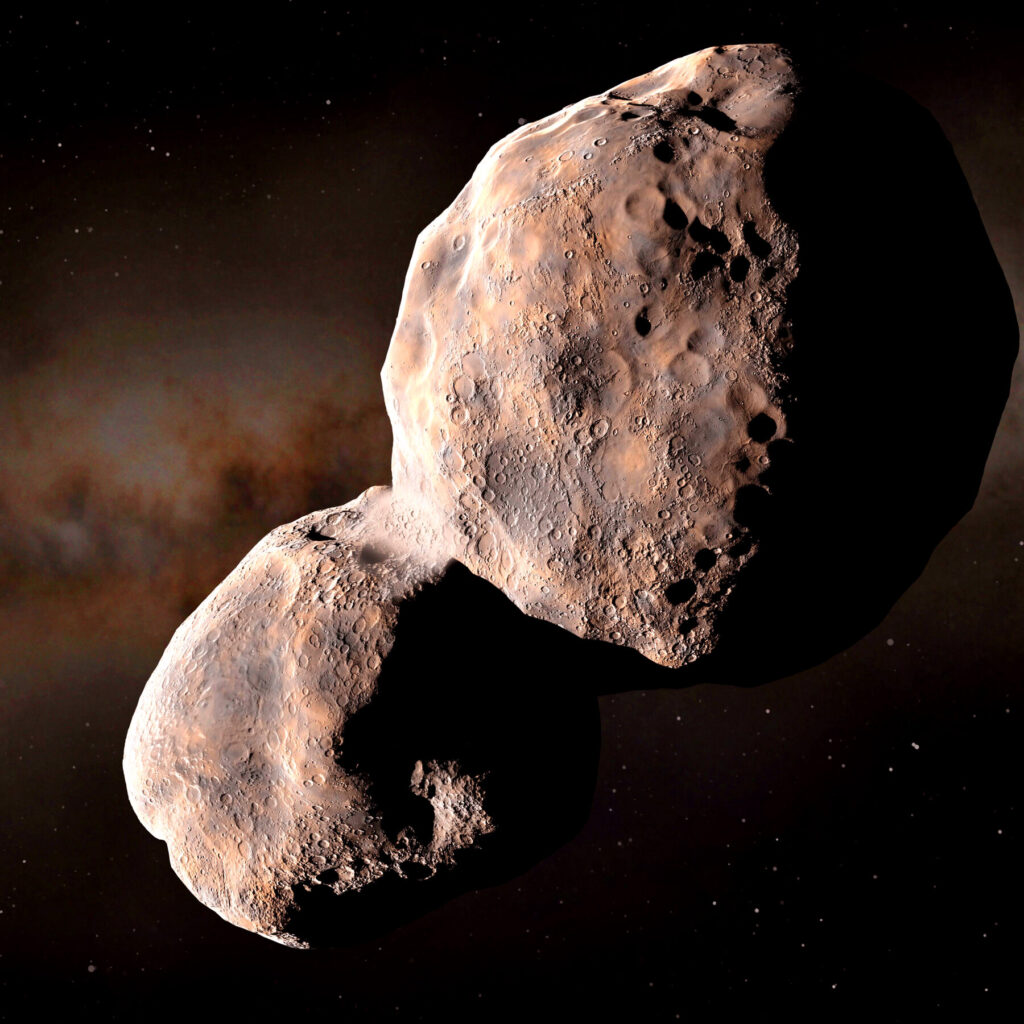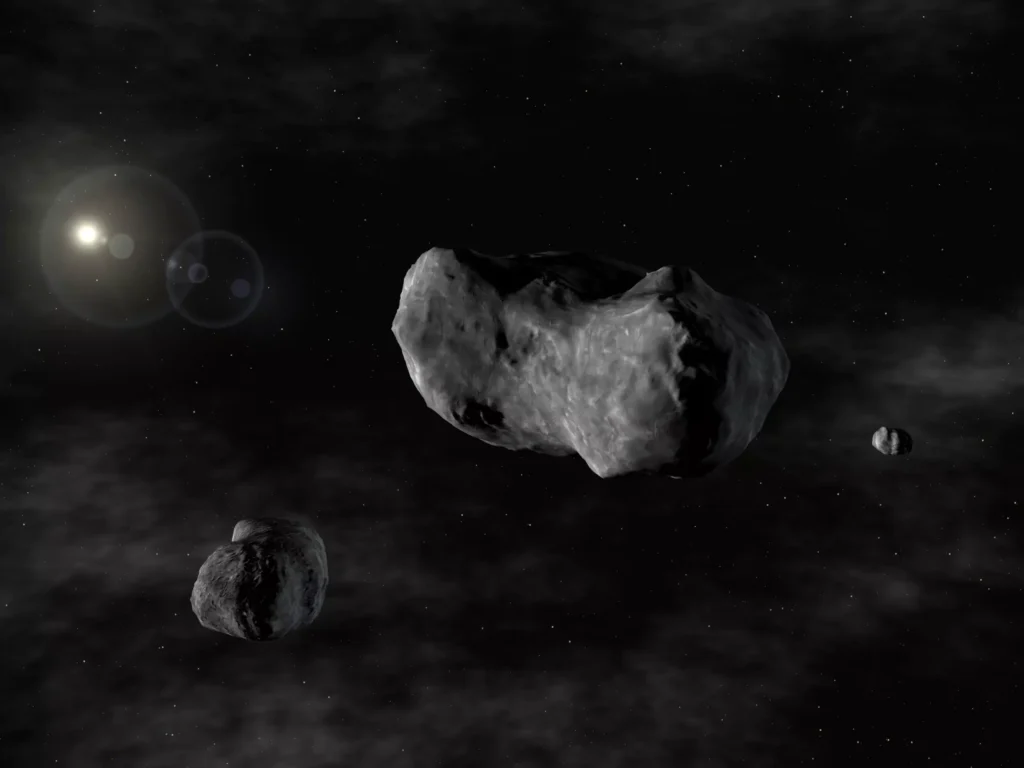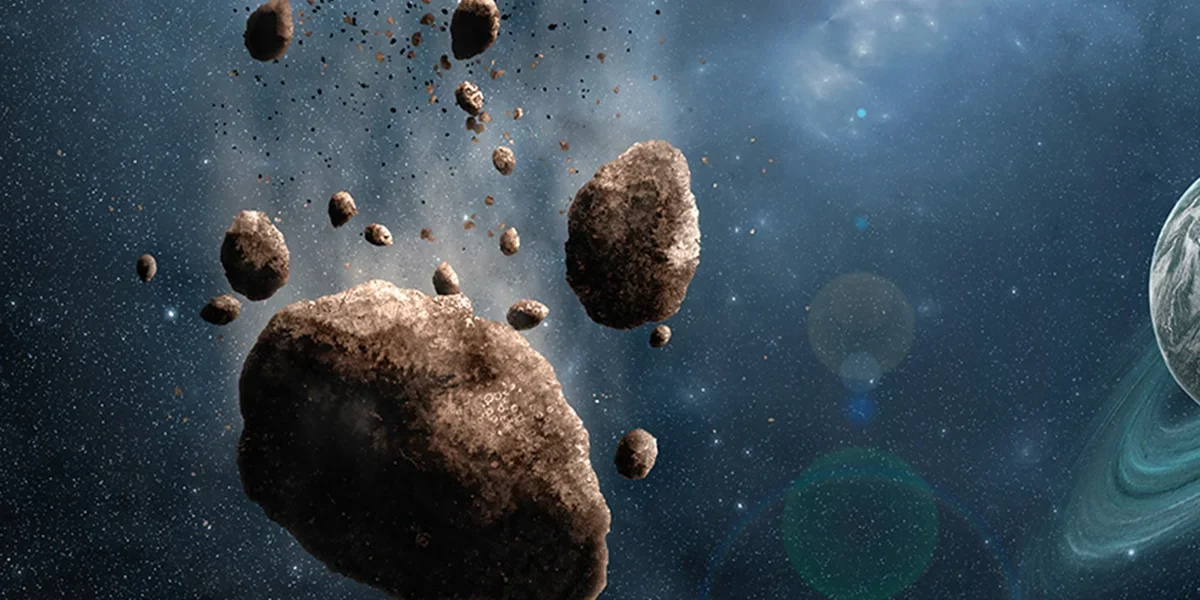- Introduction
In the asteroid belt between Mars and Jupiter, asteroid 33 Polyhymnia is a substantial rock. It is one of the solar system’s most enigmatic objects since the known elements on the periodic table are unable to account for its extremely high density. As a result, researchers have begun to hypothesize that 33 Polyhymnia could include never-before-seen elements, potentially even superheavy ones that are unique to the universe.

- Superheavy elements: What are they?
Elements with atomic numbers higher than 118, the greatest atomic number of any known element, are referred to as superheavy elements. These substances are highly challenging to investigate since they are very unstable and degrade fast. Superheavy elements, on the other hand, may be more stable and may be able to last for longer stretches of time around the atomic number 164, according to experts.
- The thick 33 Polyhymnia: Why?
The density of 33 Polyhymnia is substantially greater than that of any known element, with estimates ranging from 36 to 68 grams per cubic centimeter. Accordingly, 33 Polyhymnia must contain some extremely thick substance, potentially superheavy elements.
- On 33 Polyhymnia, how may superheavy elements have formed?
Superheavy elements might have developed on 33 Polyhymnia in a number of different ways. One theory is that they were produced when two neutron stars collided. When big stars collide at the conclusion of their lifetimes, neutron stars, which are very dense objects, are created. The atmosphere produced by the collision of two neutron stars can be very hot and dense, favoring the synthesis of superheavy elements.
The creation of superheavy elements on 33 Polyhymnia during the early stages of the solar system’s development is another possibility. The solar system at this period was an extremely chaotic environment, with many asteroids and other things colliding with one another. One of these collisions would have produced a region of extremely high temperature and pressure, which might have promoted the emergence of superheavy elements.

- How can we determine whether the elements in 33 Polyhymnia are superheavy?
Sending a spacecraft to the asteroid and taking samples will allow scientists to determine if 33 Polyhymnia contains superheavy elements. The existence of superheavy elements might then be determined by analyzing these samples. It is unclear when a mission of this magnitude would be feasible as it is highly challenging and expensive.
In the meanwhile, researchers are attempting to learn more about 33 Polyhymnia through alternative techniques. For instance, they are analyzing the asteroid’s light spectrum with telescopes. An object’s light spectrum can provide details on its make-up. Superheavy elements may be detectable in 33 Polyhymnia by analyzing its light spectrum, according to researchers.
A superheavy element was discovered on 33 Polyhymnia.
It would be a significant finding if superheavy elements were found on 33 Polyhymnia. It would imply that these substances are possible in nature and offer fresh information about how the cosmos came into being. In addition, superheavy materials could find use in future technology.
Conclusion
The asteroid 33 Polyhymnia is an intriguing and enigmatic object. More study is required to determine that it contains superheavy elements, despite its great density. It would be a significant finding with ramifications for our knowledge of the cosmos and the creation of new technology if superheavy elements were discovered on 33 Polyhymnia.
- Here are some other fascinating details about 33 Polyhymnia in addition to the information already mentioned:
1.In the solar system, it ranks third in terms of density after the neutron stars PSR J1614-2230 and PSR J0740+6620.
2.A mantle of rocky material is supposed to surround a thick core comprised of iron and nickel.
3.It belongs to the Flora family of asteroids, a collection of objects that are believed to have split off from a bigger parent body.





